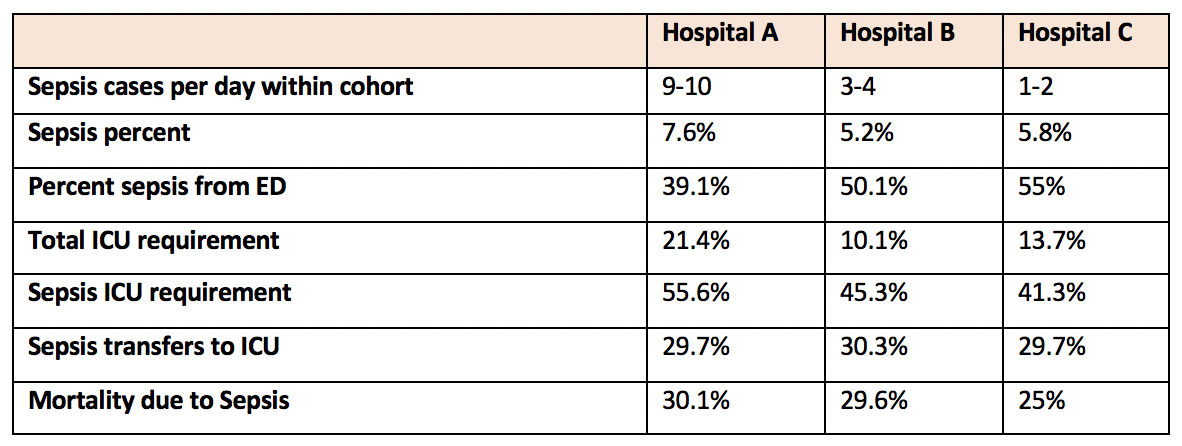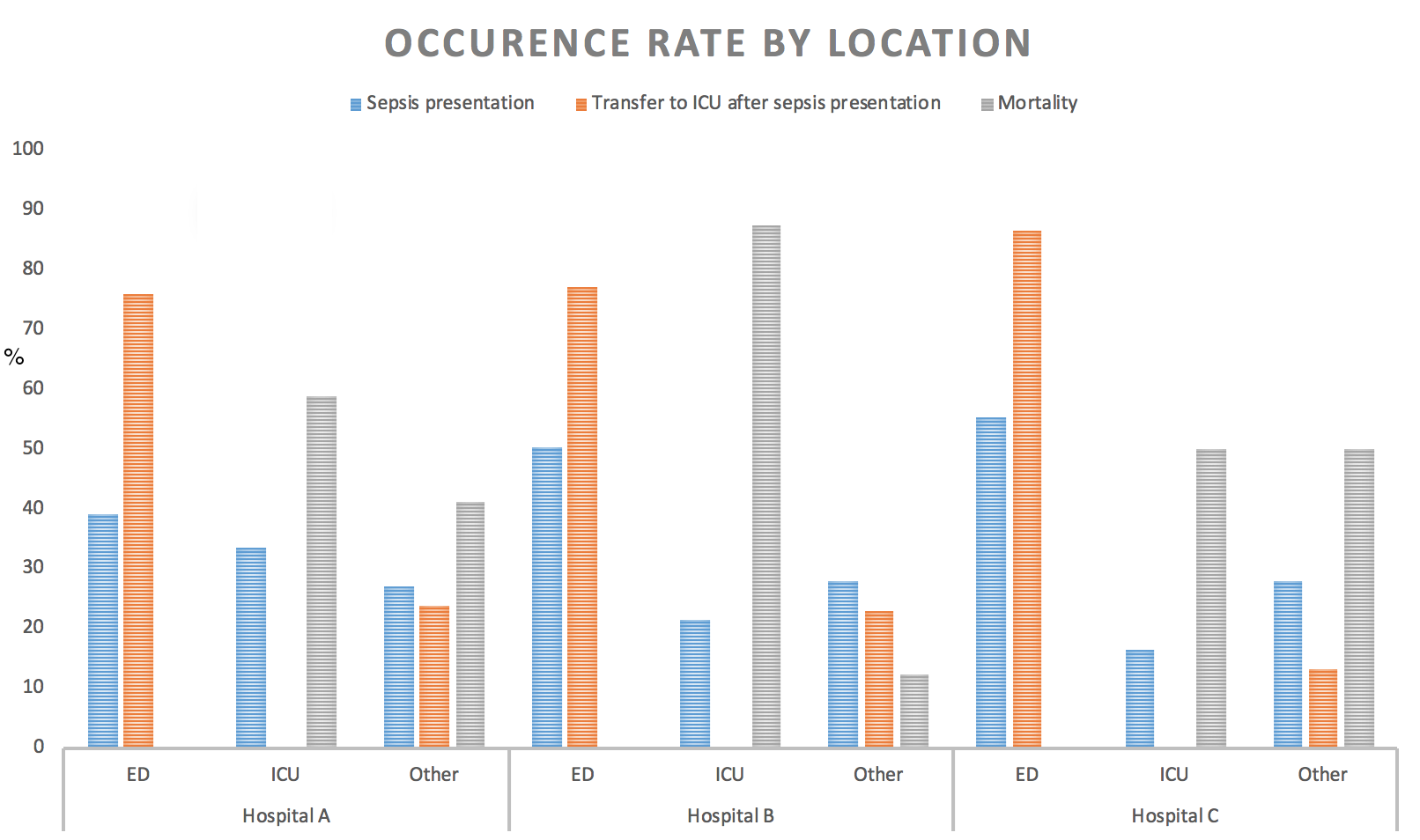Background: Sepsis is a significant cause of morbidity and mortality in hospitalized patients . Early and appropriate therapy has been shown to improve outcomes, making early diagnosis and intervention critical . However, recognition and treatment of sepsis remains a challenge . In order to understand how to best deliver sepsis treatment in different hospitals within the same hospital systems, sepsis presentation was characterized across departments at three hospitals: a large quaternary-care hospital with 1000 inpatient beds (Hospital A), a community hospital with 400 inpatient beds (Hospital B), and another community hospital with 200 inpatient beds (Hospital C).
Methods: Sepsis was characterized for a cohort across three hospitals with episodes being defined by the presence of >= 2 systemic inflammatory response syndrome (SIRS) criteria, blood culture order, and end organ damage within pre-specified time windows. A retrospective dataset of 78,077 unique patient encounters across hospitals A, B, and C within March 1, 2018 to August 31,2018.
Results: Sepsis occurs at a higher frequency in Hospital A than in Hospital B or C. Sepsis occurs most frequently in the Emergency Department across all three hospitals, accounting for 40-55% of sepsis cases. Emergency Department and ICUs combined accounted for about 75% of septic cases across in each hospital. Patients became septic relatively quickly in the emergency department, with sepsis occurring approximately 2 hours after admission compared to a 22.3 hour overall average. Overall, Hospital A has a higher ICU requirement and a higher percentage of septic patients are in the ICU. However, consistently across hospitals, about 30% of patients who become septic outside of the ICU require ICU admission and the ED accounts for at least 75% of those transfers. Sepsis accounts for 25-30% of deaths and the majority of deaths occur in ICUs.
Conclusions: Sepsis presented similarly across the three hospitals. Potential workflows should consider focusing resources in the ED, especially within the first two hours of admission. Because the large majority of sepsis related ICU transfers come from the ED, focusing efforts in the ED can reduce ICU requirement and, as a result, mortality.


